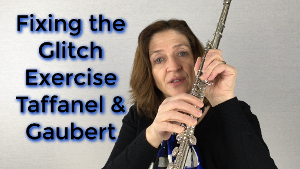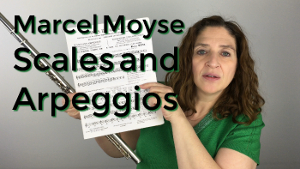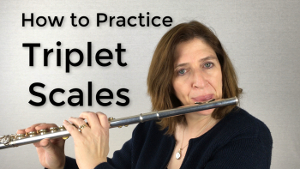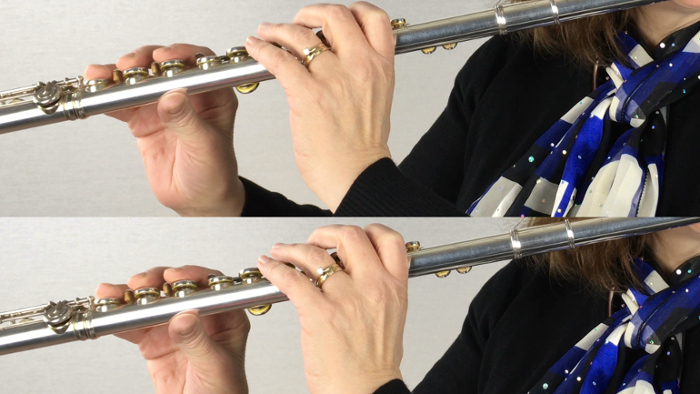That hideous thing called the glitch. That little thing that is the difference between flawless and imperfect. It separates the amateur from the professional.
I remember listening to great flutists on recordings (you know back when the only way to listen was offline: a record, a tape, or a CD) and really trying to figure out why they sounded flawless but I didn’t. What was that elusive difference? It took years until I had a very good teacher who brought the glitch to my attention. Then I had my “ah ha” moment.
The problem wasn’t the notes that I played.
The problem was in between the notes.
If your attention hasn’t been tuned into the glitch, then let me explain what it is first. Then I’ll give you some tools to fix it.
A glitch is the noise your fingers make when they move from one note to the other with a little “guh-dunk” sound or extra sound. It’s the harsh sound that comes out when you play a note without all the keys completely closed so that some air is leaking or squeaking out.
All our finger muscles are not created equal. Some of them go down faster, some of them are slower, some of them go down harder, some of them go down lighter. And what we have to do as Flutists is, to teach them all to do the same thing, at the same time. And that’s not always easy.
If you still don’t know what I mean, then get out your flute right now and try some notorious places for glitches. Play from a hi C to a 3rd 8va Bb to a 3rd 8va F#. Play it really fast. Do you hear extra sound if your fingers don’t move smoothly from one to the other? That is a glitch. Or try a high Eb to a C. Go back and forth fast. When your fingers don’t move in time perfectly, the sound you hear is a glitch. There are many combinations of fingerings that allow that glitch sound to happen.
Once you begin to hear glitches, you can’t un-hear them. And they will slowly drive you crazy!
The Good News!
You can fix them and take your playing to a whole new level.
The Bad News!
It is a slow and tedious process that will take a long time. OK, it’s not that bad. But, it is a bit tedious.
There are any number of exercises that you can use to fix the glitch. But, here are a couple of my favorite. The first exercise is to play all of your scales in 3rds. But, play very very slowly 2 8vas. Listen very carefully for any extra sound between notes. The key to fixing them is to analyze which finger(s) are not moving at the same time as the others. All finger muscles were not created equally. When you believe that you know which fingers are causing the problem then you concentrate on those particular fingers landing at the same time. Over and over and over. You will not fix one particular glitch or even a number of them in one sitting.
Once you have gone through your scales in 3rds then begin scales in 4ths. These scales present an entirely new set of glitches. From there the skies the limit – scales in 5ths, 6ths, 7ths. They are all wonderful.
Another great exercise for glitches is Taffanel and Gaubert #10 playing very slowly and listening very carefully for glitches.
Let me warn you, these exercises are not for the faint of heart. They are slow and tedious. Don’t spend too much time or else you really will go crazy. Short concentrated times are what is needed to fix the glitch.
Add these exercises to your daily practice. You’ll be glad you did!
Doctor Flute
Watch me discuss this:
Fixing the Glitch Exercise with Taffanel & Gaubert 10 & 11 Practice with Me

Marcel Moyse Scales and Arpeggios – FluteTips 95

How to Practice Triplet Scales

